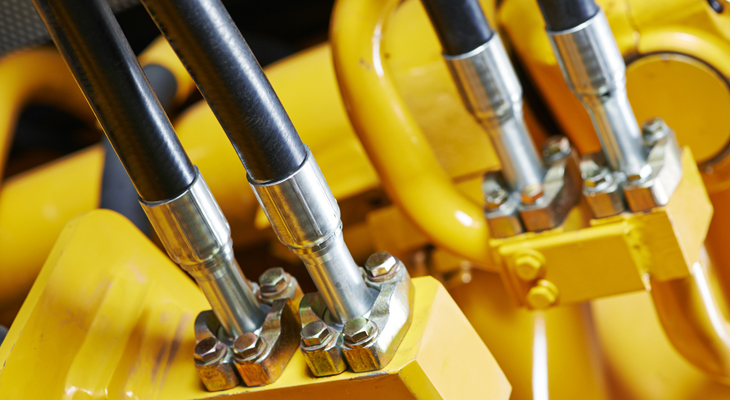Hydraulic systems combine physics with technology. Finding the perfect blend results in machinery that is powerful and efficient. The basic mechanics underpinning a hydraulic system are easy to understand, but creating an optimised result requires experience. Here’s a quick overview:
What Is A Hydraulic System?
Hydraulic systems are used widely in many industries. Operating on the principle of the smooth transfer of force, they make light work of heavy lifting. They also enable rapid mechanical repetition, enabling equipment to run more quickly and efficiently than manual energy would be able to achieve. As such, hydraulic systems are the backbone of construction, vehicular, and manufacturing industries.
How Do Hydraulic Systems Work?
Hydraulic systems operate on the basic principle of pressure. A vacuum inside the system allows the fluid to become highly pressurised, thereby transferring the power from point A to point B without loss of energy. This system is a very reliable one, which is found throughout nature as well as in industry. For instance, plants absorb water from the ground using exactly the same laws of physics as a pneumatic drill. This natural element underpins the reliability of the technology.
What Are The Different Types Of Hydraulic System?
Pascal’s Law governs how hydraulic systems work but it can be applied in different ways. The most familiar types of hydraulic systems are cylinders and motors. Each enables a smooth and uninterrupted transfer of pressure, although the end result is different. Cylinders transfer the force in a linear direction, while motors create a torque, enabling rotation. Frequently, these are used in combination.
What Makes A Good Hydraulic System?
The design of a hydraulic system is always focused on the end requirement. For instance, if augmented strength is needed – such as a crane or similar heavy lifting equipment – the hydraulics will be designed for the slow and steady flow of power. If the requirement is for both strength and speed, the system will require stability from high-pressure vibrations.
However, what every type of hydraulic system has in common is the requirement for a complete, uninterrupted vacuum. This is achieved by combining the correct fluid ratio with high-quality seals around the reservoirs and pumps. The end result is very similar to an electric circuit, with the primary difference being that it is liquid that is moving.
What Should I Look For In A Hydraulic System?
In any system, the quality of the components and the quality of the hydraulic fluid is important. If the fluid becomes contaminated, or if oxygen enters the circuit, the transmission of energy is interrupted. As such, the best hydraulic systems are designed to be sterile environments.
Parts should be designed for both proactive maintenance and easy repair. Proactive maintenance refers to routine, hassle-free preventative servicing. This increases productivity, efficiency, and reliability, while reducing overall costs. Therefore, it pays to invest in premium parts that have high levels of integrity.
What Next?
Hydraulic systems are crucial to the successful operation of a diverse range of industries. For more information about how Hydrastar can help to optimise your business, please give us a call today. Our sales team are working remotely and are ready to help, and we are dispatching orders as usual.
Image source: Harvard Filtration



